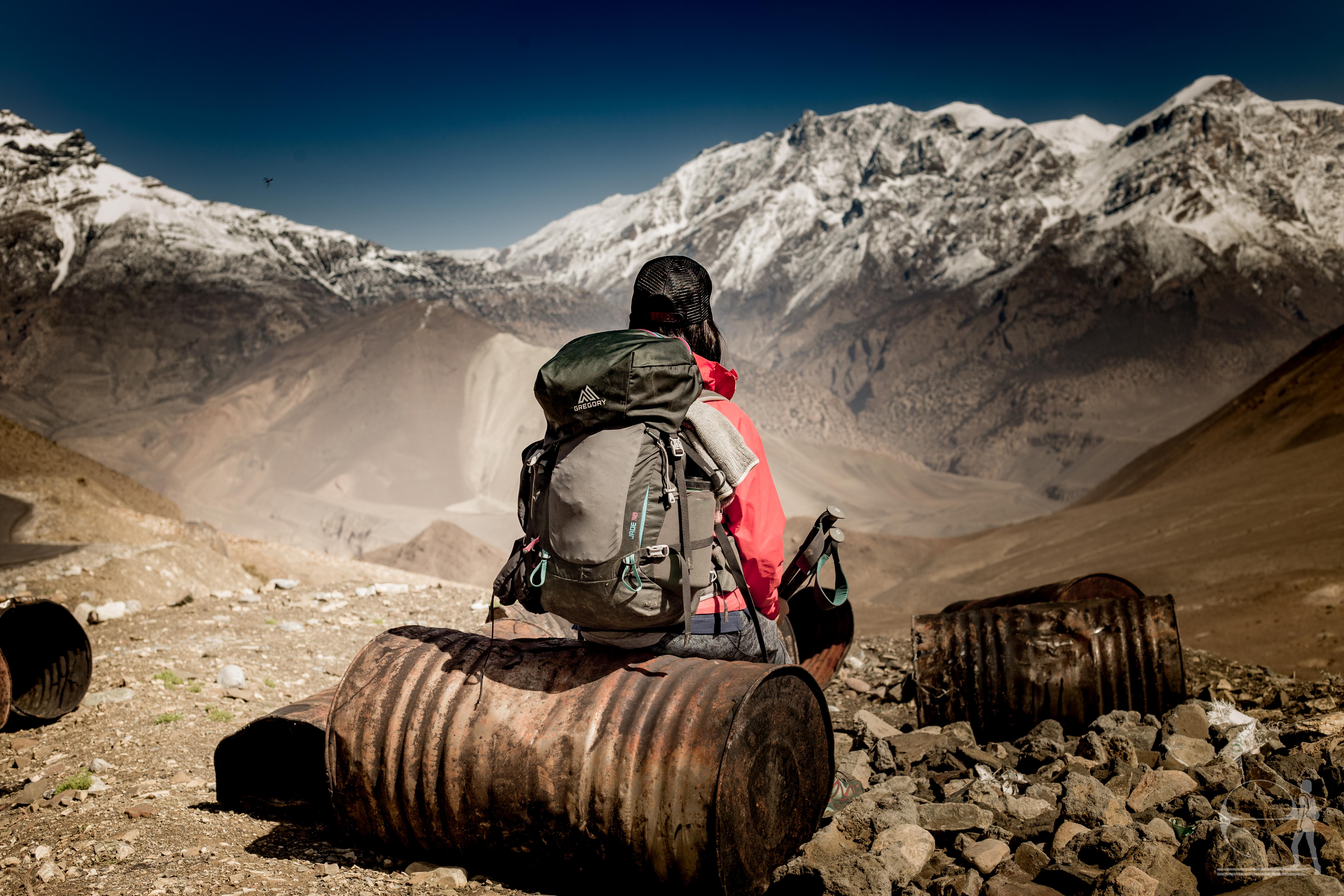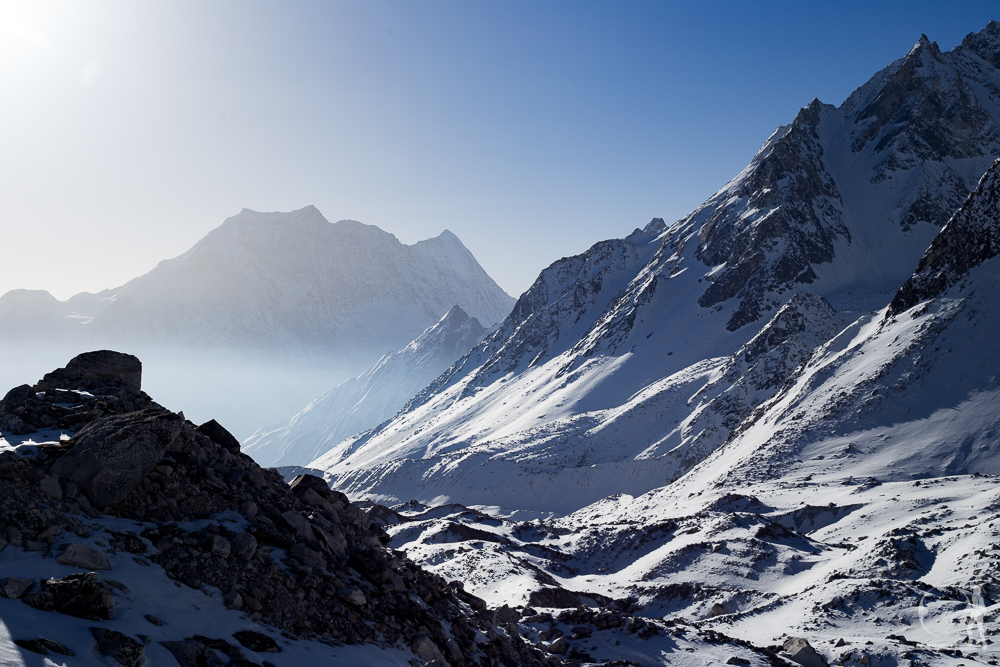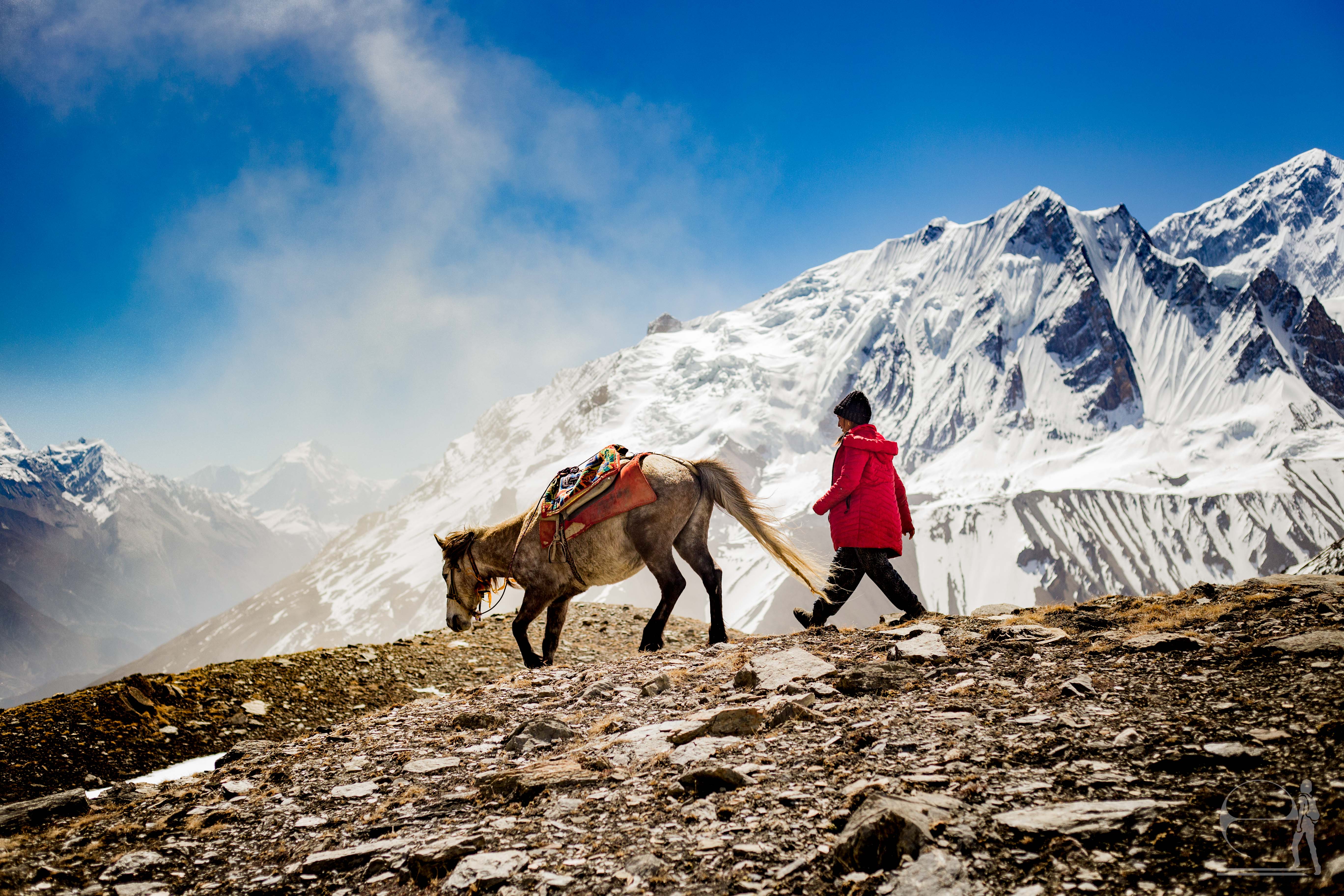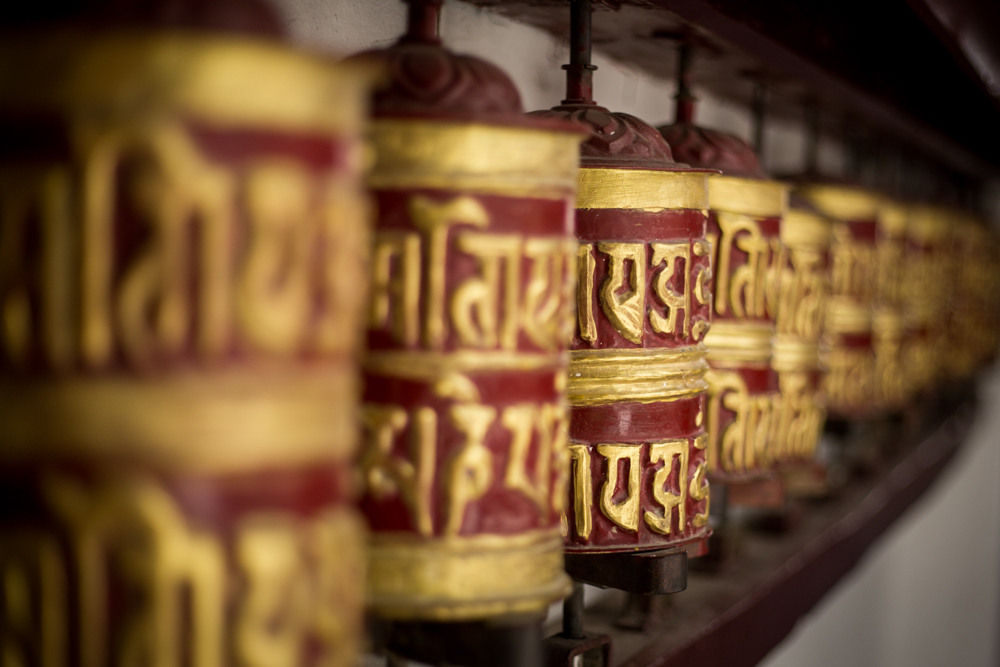/ Layering 101
3. How do various fabrics perform in different conditions?

Once I know what kind of conditions to expect, I can start thinking about what sort of material I’ll need. When I’m putting together my layers, I think about how down, wool, and synthetic materials (including fleece/polyester) will work together to keep me warm or cool. No cotton.
As I mentioned above, we want a lot out of our clothes on the trail: insulate, wick internal moisture (sweat) away from our skin and inner layers, vent the internal moisture outside, and shield us from outside moisture (precipitation). In this section, I’ll go over the performance of different fabrics in different trail conditions.
The different fabrics at a glance:
| Fabric | Insulating | Wicking | Drying | Odor |
|---|---|---|---|---|
| Cotton | ★ | ★ | ★ | ★ |
| Wool | ★★ | ★★ | ★★ | ★★★ |
| Synthetic | ★★ | ★★★ | ★★★ | ★★ |
| Down | ★★★ | ★ | ★ | ★★ |
On small screens, scroll sideways to view the entire table.
Mountaineering wisdom: Cotton Kills.
Before we dig into the materials, let’s talk about why all this hate for cotton. Cotton is a staple in our daily wardrobe, but general mountaineering wisdom says it should be avoided while you’re out in the elements. This includes jeans. But why?
Cotton is bad at insulating, wicking, and venting moisture.
Simply put, cotton is really good at absorbing water. However, not only does it absorb the water, it keeps the water next to your skin. Water conducts heat away from your skin faster than dry materials. This means you’ll get cold, which is pretty counterproductive if you’re trying to warm up because it’s already cold outside. In fact, this can get dangerous and lead to hypothermia over prolonged periods of time.
In short, cotton is pretty bad at insulating, wicking and venting moisture, and at shielding you from outside moisture.
Okay, so what about in warm conditions? Cotton is less dangerous in warmer conditions, but it’s still not as comfortable as other materials. Cotton will absorb liquid, like your sweat, and keep it next to your skin. This can irritate your skin over time. Besides, why bring an extra cotton t-shirt which you can’t use as a layer on colder days? That’s just extra weight in your pack.
Need to cross-check this information? Here are some resources:
Verdict: Ditch the cotton.
Not your grandmother’s wool

After all that hate on cotton, what fabric performs better? Wool.
When you think wool, you might picture chunky cable-knit cardigans or itchy thick sweaters. That’s not what I have in mind. Merino wool is fine, soft, and not scratchy next to your skin. And, it performs really well.
Wool fibers consist of an inner and outer surface. The inner core is hydrophilic, meaning it attracts and absorbs water. That sounds like what the cotton does, right? However, the outer surface of a wool fiber is hydroscopic, meaning it repels water.
This means the wool actually wicks the moisture from your skin and moves it out away from your skin. And, since it keeps your skin dry, wool is pretty good as an insulator, even when moderately wet. Perhaps most importantly, wool is more resistant to odor-causing bacteria. Yes, that’s right: I can wear the same wool shirt for days without smelling like a boy’s locker room. Actually…a friend decided to test this out by only packing one wool shirt for a 5 day conference. I’m guessing it passed the test or his colleagues were too polite to comment.
Now, what’s the downside of wool? Wool dries more quickly than cotton but not as quickly as synthetic materials, since its inner core is hydrophilic. Pure 100% merino wool is also less durable against abrasion. For this reason, I recommend wool blends, such as wool woven around a nylon core to increase the shirt’s durability.
Verdict: Wool is pretty good as a next-to-skin base-layer or an insulating mid-layer.
Bring on the synthetics

An alternative to wool is synthetic materials. These generally will cost less than wool, have great moisture-wicking properties, and be mildly odor resistant. In general, synthetics dry faster than wool.
The downside? Synthetics are not as odor-resistant as wool: you’ll stink faster. They also are not as water-resistant and wind-resistant as wool. Synthetics, unless treated, will soak through faster than wool, though they will also dry off faster. New coatings and membranes are being developed and incorporated to address this.
Verdict: Synthetic materials are pretty good as a next-to-skin base-layer or an insulating mid-layer.
And way Down we go
While wool and synthetics are very good at moving moisture, they’re not as good at insulating as down. Down is very light and very compactible, or easy to pack down. This is very important when you’re packing for a multi-day trek, since it keeps your bag light and saves on space.
Down’s insulating properties work by trapping air between the feathers. Wet, compacted down doesn’t insulate well.
Down comes in different fill powers, a measure of the loft, or fluffiness, of down. Basically, the higher the fill power, the more air it can trap, the more insulating the down item is.
But down is not very good with water. When down gets wet, it packs down. Since down’s insulating properties work by trapping air between the feathers, compacted down doesn’t work very well at all. Technology is working to address this by developing dry treatments for down which allow them to retain some loft when wet. However, wool and synthetics will work much better with water.
However, this does not mean you should not use down. Instead, you simply need to keep your down dry.
Verdict: Down is great as an insulating mid-layer, as long as you keep it dry.
Stay dry

Wait a second. The above fabrics all perform the wicking, insulating, and venting properties we need on the trail. However, they don’t keep us dry from outside moisture.
For this, your choices become a bit more limited: you need a rain jacket.
However, not just any rain jacket will work! Remember, we need to be able to let moisture out. Technologies like eVent and GoreTex take this into consideration. Or if you’re going cheap, you can probably go with a plastic poncho which ventilates via the gaps down the side.
Verdict: Use a breathable rain shell to keep yourself dry.
So, how do you put all these materials together?




